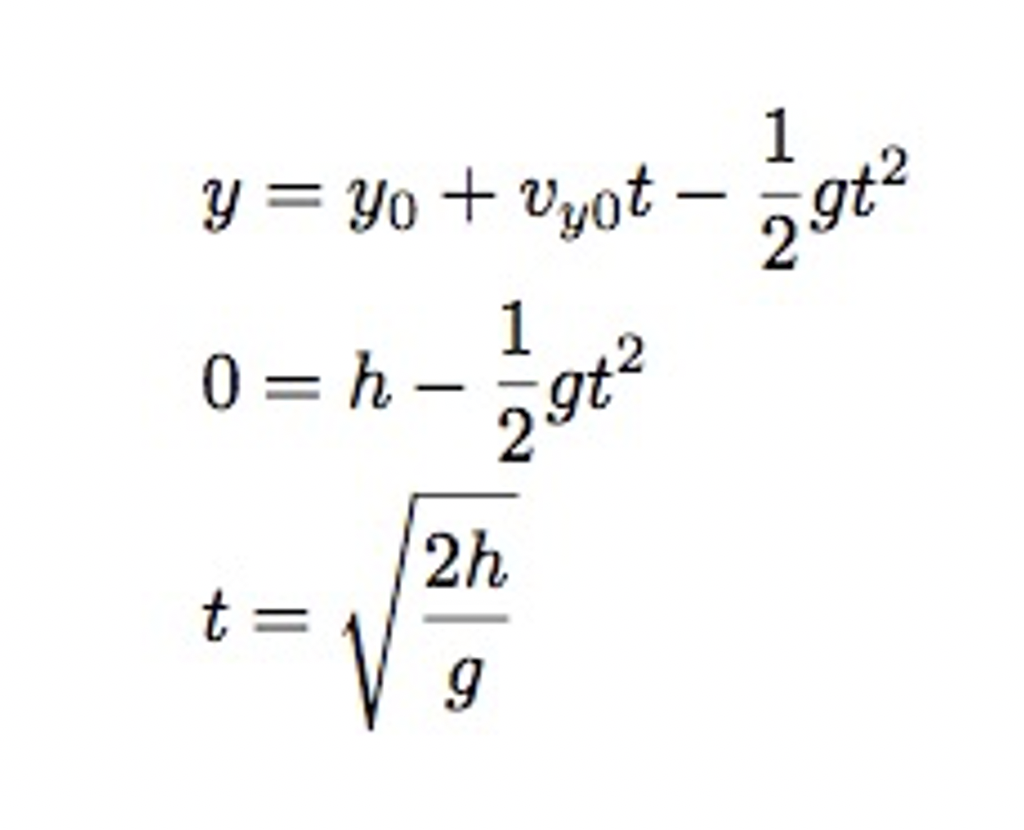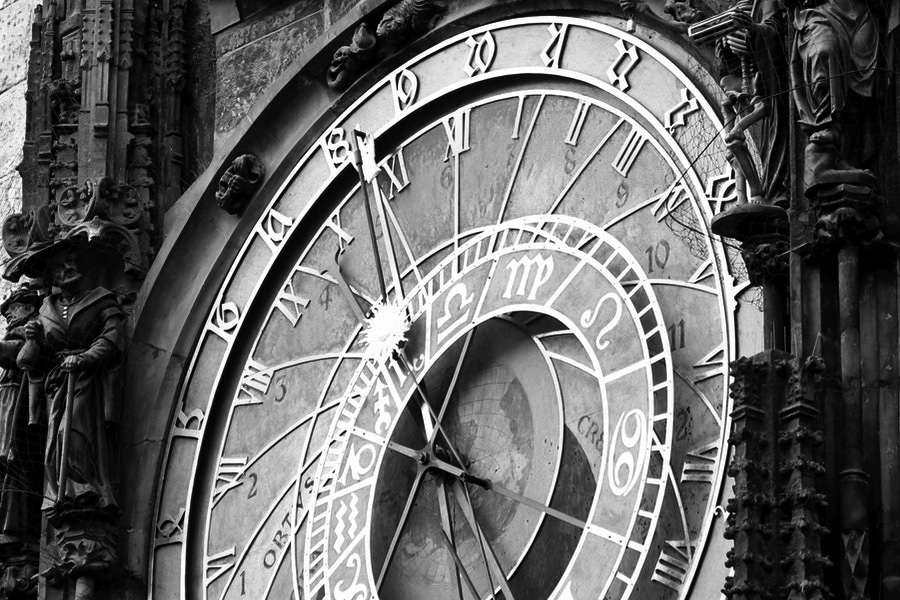This article was originally published in September 2020.
What is the duration of the present moment? How is it that this present moment is replaced by ‘the next moment’? Within every organism, sentient or not, there are thousands of chemical processes that occur with their own characteristic time periods, but these time periods start and stop at different times so that there is no synchronized ‘moment’. Elementary atomic collisions that build up molecules take nanoseconds while cell division takes minutes to hours, and tissue cell lifespans vary from two days in the stomach lining to eight years for fat cells (see Cell Biology). None of these jangled timescales collectively or in isolation create the uniform experience we have of now and its future moments. To find the timescale that corresponds to the Now experience we have to look elsewhere.
It’s all in the mind!
A variety of articles over the years have identified two to three seconds as the maximum duration of what most people experience as ‘now’, and what researchers call the ‘specious present’. This is the time required by our brain’s neurological mechanisms to combine the information arriving at our senses with our internal, current model of the ‘outside world’. During this time an enormous amount of neural activity has to happen. Not only does the sensory information have to be integrated together for every object in your visual field and cross connected to the other senses, but dozens of specialised brain regions have to be activated or deactivated to update your world model in a consistent way.
In a previous blog I discussed how important this world model is in creating within you a sense of living in a consistent world with a coherent story. But this process is not fixed in stone. Recent studies by Sebastian Sauer and his colleagues at the Ludwig-Maximilians-Universität in Munich show that mindfulness meditators can significantly increase their sense of ‘now’ so that it is prolonged for up to 20 seconds.
The knitting together of these ‘nows’ into a smooth flow-of-time is done by our internal model-building system
In detail, a neuron discharge lasts about 1 millisecond, but it has to be separated from the next one by about 30 milliseconds before a sequence is perceived, and this seems to be true for all senses. When you see a ‘movie’ it is a succession of still images flashed into your visual cortex at intervals less than 30 milliseconds, giving the illusion of a continuous unbroken scene. (Dainton: Stanford Encyclopedia of Philosophy, 2017).
The knitting together of these ‘nows’ into a smooth flow-of-time is done by our internal model-building system. It works lightning-fast to connect one static collection of sensory inputs to another set and hold these both in our conscious ‘view’ of the world. This gives us a feeling of the passing of one set of conditions smoothly into another set of conditions that now make up the next ‘Now’. To get from one moment to the next, our brain can play fast-and-loose with the data and interpolate what it needs. For example, in our visual world, the fovea in our retina produces a blind spot but you never notice it because there are circuits that interpolate across this spot to fill in the scenery. The same thing happens in the time dimension with the help of our internal model to make our jagged perceptions in time into a smooth movie experience.
Neurological conditions such as strokes, or psychotropic chemicals, can disrupt this process and cause dramatic problems. Many schizophrenic patients stop perceiving time as a flow of linked events. These defects in time perception may play a part in the hallucinations and delusions experienced by schizophrenic patients, according to some studies. There are other milder aberrations that can affect our sense of the flow-of-time.
Research has also suggested the feeling of awe has the ability to expand one’s perceptions of time availability. Fear also produces time-sense distortion. Time seems to slow down when a person skydives or bungee jumps, or when a person suddenly and unexpectedly senses the presence of a potential predator or mate. Research also indicates that the internal clock, used to time durations in the seconds-to-minutes range, is linked to dopamine function in the basal ganglia. Studies in which children with ADHD are given time estimation tasks shows that time passes very slowly for them.
Earlier Nows either pass into short-term memory if they have been tagged with some emotional or survival attributes, or fade quickly into complete forgetfulness
Because the volume of data is enormous, we cannot hold many of these consecutive Now moments in our consciousness with the same clarity, and so earlier Nows either pass into short-term memory if they have been tagged with some emotional or survival attributes, or fade quickly into complete forgetfulness. You will not remember the complete sensory experience of diving into a swimming pool, but if you were pushed, or were injured, you will remember that specific sequence of moments with remarkable clarity years later!
The model-building aspect of our brain is just another tool it has that is equivalent to its pattern-recognition ability in space. It looks for patterns in time to find correlations which it then uses to build up expectations for ‘what comes next’. Amazingly, when this feature yields more certainty than the evidence of our senses, psychologists like Albert Powers at Yale University say that we experience hallucinations (Fan, 2017). In fact, 5-15% of the population experience auditory hallucinations (songs, voices, sounds) at some time in their lives when the brain literally hears a sound that is not there because it was strongly expected on the basis of other clues. One frequent example is that people claim to hear the Northern Lights as a crackling fire or a swishing sound, because their visual system creates this expectation and the brain obliges.
This, then, presents us with the neurological experience of Now. It is between 30 milliseconds and several minutes in duration. It includes a recollection of the past which fades away for longer intervals in the past, and includes a sense of the immediate future as our model-making facility extrapolates from our immediate past and fabricates an expectation of what comes next.
Living in a perpetual Now is no fun. The famed psychologist Oliver Sacks describes a patient, Clive Wearing, with a severe form of amnesia, who was unable to form any new memories that lasted longer than 30 seconds, and became convinced every few minutes that he was fully conscious for the first time. “In some ways, he is not anywhere at all; he has dropped out of space and time altogether. He no longer has any inner narrative; he is not leading a life in the sense that the rest of us do […] .It is not the remembrance of things past, the “once” that Clive yearns for, or can ever achieve. It is the claiming, the filling, of the present, the now, and this is only possible when he is totally immersed in the successive moments of an act. It is the “now” that bridges the abyss.”
Physical ‘now’
This monkeying around with brain states, internal model-making and sensory data creates Now as a phenomenon we experience, but the physical world outside our collective brain population does not operate through its own neural systems to create a Cosmic Now. That would only be the case if, for example, we were literally living inside The Matrix… which I believe we are not. So in terms of physics, the idea of Now does not exist. We even know from relativity that there can be no uniform and simultaneous Now spanning large portions of space or the cosmos. This is a problem that has bedeviled many people across the millennia.
In terms of physics, the idea of Now does not exist. There can be no uniform and simultaneous Now spanning large portions of space or the cosmos
Augustine (in the fourth century) wrote, “What is time? If no one asks me, I know; if I wish to explain, I do not know. […] My soul yearns to know this most entangled enigma.” Even Einstein himself noted “that there is something essential about the Now which is just outside the realm of science”.
Both of these statements were made before quantum theory became fully developed. Einstein developed relativity, but this was a theory in which spacetime took the place of space and time individually. If you wanted to define ‘now’ by a set of simultaneous conditions, relativity put the kibosh on that idea because due to the relative motions and accelerations of all observers, there can be no simultaneous ‘now’ that all observers can experience. Also, there was no ‘flow of time’ because relativity was a theory of worldlines and complete histories of particles from start to finish (called the boundary conditions of worldlines). Quantum theory, however, showed some new possibilities.
In physics, time is a variable, often represented by the letter t, that is a convenient parameter with which to describe how a system of matter and energy change. The first very puzzling feature of time as a physical variable is that all mathematical representations of physical laws or theories show that time is continuous, smooth and infinitely divisible into smaller intervals. These equations are also ‘timeless’ in that they can be written down on a piece of paper and accurately describe how a system changes from start to finish (based on boundary conditions defined at ‘t=0’) , but the equations show this process as ‘all at once’.

In fact, this perspective is so built into physics that it forms the core of Einstein’s relativity theory in the form of the 4D spacetime ‘block’. It also appears in quantum mechanics because fundamental equations like Schroedinger’s Equation also offer a timeless view of quantum states.
In all these situations, one endearing feature of our world is actually suppressed and mathematically hidden from view, and that is precisely the feature we call ‘now’.
To describe what things look like Now, you have to dial into the equations the number t = t(now). How does nature do that? As discussed by physicist Lee Smolin in his book Time Reborn, this is the most fundamental experience we have about the physical world as sentient beings, yet it is not represented by any feature in the physical theories we have developed thus far. There is no theory that selects t = t(now) over all the infinite other moments in time.
Perhaps we are looking in the wrong place!
Just as we have seen that what we call ‘space’ is built up like a tapestry from a vast number of quantum events described (we hope!) by quantum gravity, time also seems to be created from a synthesis of elementary events occurring at the quantum scale. For example, what we call temperature is the result of innumerable collisions among elementary objects such as atoms. Temperature is a measure of the average collision energy of a large collection of particles, but cannot be identified as such at the scale of individual particles. Temperature is a phenomenon that has emerged from the collective properties of thousands or trillions of individual particles.
A system can be described completely by its quantum state – which is a much easier thing to do when you have a dozen atoms than when you have trillions, but the principle is the same. This quantum state describes how the elements of the system are arrayed in 3D space, but because of Heisenberg’s Uncertainty Principle, the location of a particle at a given speed is spread out rather than localised to a definite position. But quantum states can also become entangled. For these systems, if you measure one of the particles and detect property P1, then the second particle must have property P2. The crazy thing is that until you measured that property in the first particle, it could have had either property P1 or P2, but after the measurement the distant particle ‘knew’ that it had to have the corresponding property even though this information had to travel faster than light to insure consistency.
An intriguing set of papers by physicist Seth Lloyd at Harvard University in 1984 showed that over time, the quantum states of the member particles become correlated and shared by the larger ensemble. This direction of increasing correlation goes only one way and establishes the ‘arrow of time’ on the quantum scale.
One interesting feature of this entanglement idea is that ‘a few minutes ago’, our brain’s quantum state was less correlated with its surroundings and our sensory information than at a later time. This means that the further you go into the past moments, the less correlated they are with the current moment because, for one, the sensory information has to arrive and be processed before it can change our brain’s state. Our sense of Now is the product of how past brain states are correlated with the current state. A big part of this correlating is accomplished, not by sterile quantum entanglement, but by information transmitted through our neural networks and most importantly our internal model of our world – which is a dynamic thing.
If we did not have such an internal model that correlates our sensory information and fabricates an internal story of perception, our sense of Now would be very different because so much of the business of correlating quantum information would not occur very quickly. Instead of a Now measured in seconds, our Nows would be measured in hours, days or even lifetimes, and be a far more chaotic experience because it would lack a coherent, internal description of our experiences.
This seems to suggest that no two people live in exactly the same Now, but these separate Now experiences can become correlated together as the population of individuals interact with each other and share experiences through the process of correlation. As for the rest of the universe, it exists in an undefined Now state that varies from location to location and is controlled by the speed of light, which is the fastest mode of exchanging information.
This article was originally published on The Astronomy Cafe.








